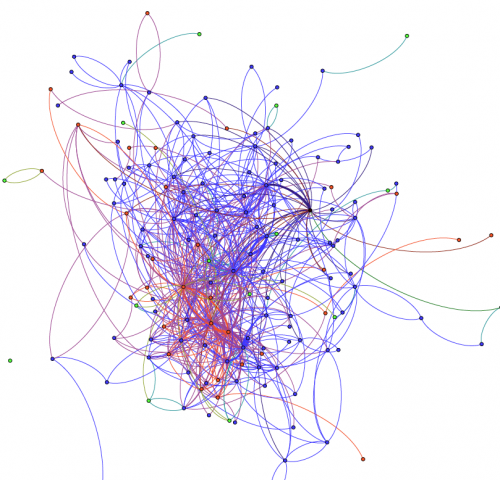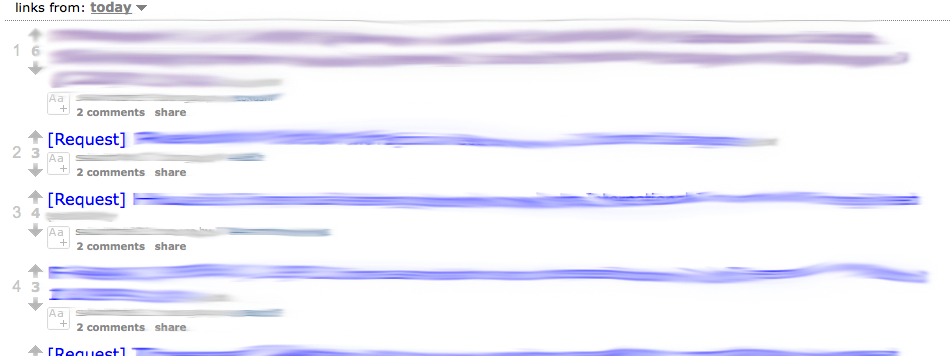I just came across Nancy White’s discussion of her contribution to the 2011-2012 Change MOOC organized by George Siemens, Stephen Downes, and Dave Cormier (through Stephen’s announcement). Draft schedule here. I thought that Nancy’s description of her session sounded wonderful – so wonderful actually, that I wish that we had all shared our session descriptions with each other prior to designing them so as to create more synergies between the weekly sessions. There’s always room for re-design however, and I’m sure the #change11 organizers wouldn’t mind (smile)!
I am sharing my session description below, and even though I have tried to draw links to other sessions, you will see that task #2 is asking participants to make connections to other parts of the course in a very specific and personal way.
I would love to hear any input that you may have about this!
Scholars’ online participation and practices (April 30-May 6, 2012)
George Veletsianos, Instructional Technology – University of Texas at Austin
1. Overview
Within the openness movement, we have seen increasing calls for scholars and educators to employ open digital practices. For instance, enthusiasts argue that networked technologies such as blogs, social networking sites, microblogging fora, and other emerging social media can help democratize knowledge production and dissemination. During this week, we will explore how academics co-opt and appropriate technology in their day-to-day professional lives, with specific emphasis on social networking technologies. We will discuss faculty members’ experiences and practices when they adopt online social networks (e.g., Twitter) and online scholarly networks (e.g., Academia.edu) for professional purposes, and investigate whether their online participation is (re)defining academic work (i.e. teaching and research).
My work in this domain has started with a desire to understand faculty member’s digital practices. Professor Weller’s research (2011), which was also presented in this MOOC, has set the foundations for this investigation. Thus, the digital scholarship movement influences and informs my work. In this context, I have studied the relationship between scholarly practice and participatory technologies, and sought to understand (a) what faculty members’ do in online social networks, (b) what their experiences in these networks are like, and (c) what issues and pitfalls we might face when suggesting the use of social media for faculty members’ professional practice. This is an important topic of study because (a) digital scholarship is gaining increasing interest, and (b) a large percentage of higher education faculty have adopted, are considering the use of), or have rejected social networking technologies for professional practice, Importantly, the field is in dire need of empirical data to be in a position to critically evaluate claims with regards to the benefits that social technologies might afford academic practice (i.e. teaching and research).
During this particular week, we will consider whether the rise of online social networking within academic circles is a result of technological or cultural shifts, and investigate the purposes, goals, and pitfalls of networked participation. For instance, we will ask: What are academics doing in online public spaces? What are their intentions and what are their fears? Are faculty members’ altruistically sharing information on social media for the benefit of the community in which they belong? Or, is information-sharing a self-serving activity? Are academics sharing information in order to assist the profession grow intellectually, or are they attempting to develop a “brand” around themselves? Are we seeing the rise of the “public scholar” or the rise of the “celebrity scholar?” A critical evaluation of academics’ participation in digital spaces matters because an understanding of these reasons will allow us to gain a better sense of how and why online social networks are used in the ways that they are. Whether we recognize it or not, we are part of a complex techno-cultural system that is ever changing in response to both internal and external stimuli, including technological innovations and dominant cultural values. An understanding of the cotemporary forces that shape academic work is necessary for enhancing education and scholarship.
2. List of Readings
Hall, R. (2010). Open Education: The need for critique. Blog entry retrieved on August 12, 2011 from http://www.learnex.dmu.ac.uk/2010/07/27/open-education-the-need-for-critique/
Selwyn, N. (2010). Looking beyond learning: notes towards the critical study of educational technology. Journal of Computer Assisted Learning, 26(1), 65-73.
Veletsianos, G. (in press). Higher Education Scholars’ Participation and Practices on Twitter. Journal of Computer Assisted Learning.
Weller, M. (in press). The digital scholar: How technology is changing academic practice. Bloomsbury Academic.
Plus two other papers that I am not yet able to share publicly, but will be available by the time this session arrives.
3. Suggested Activities
Task 1: What do academics do on _________________ ?
The intention of this task is to describe academics’ participation on a number of social technologies (e.g., Twitter, Quora, Google +, Linkedin, Blogs, etc). The goal is to evaluate participation and understand (a) how technology and its affordances influence participation, and (b) professional roles influence participation and use of technology. This is essentially a mini research task.
Your “description” can be done individually or collaboratively. It can also take any form that you are comfortable with. For instance, it can be an essay posted as a blog entry, a video narrative, a digital story, or a concept map. You should include support for any claims that you make. For instance, you can use empirical data or references to the literature (or other writing) to support your claims.
Task 2: Create a concept map that explains how the topic studied this week relates to and/or contributes to further understanding the topics studied in preceding weeks.



